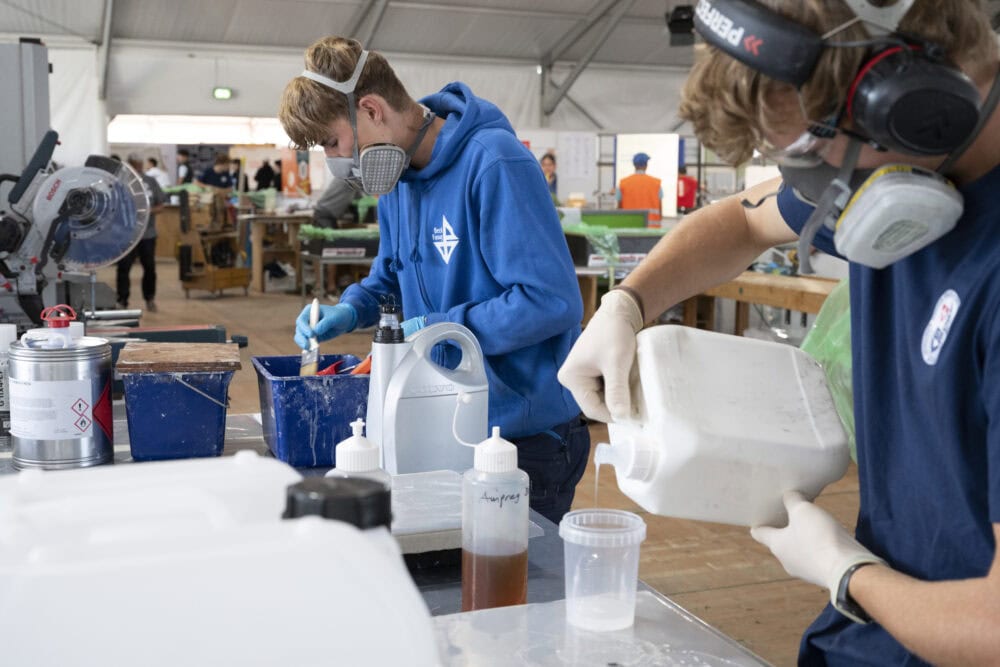Sepsis - an underestimated danger to health and life
In Switzerland, over 20,000 patients fall ill with sepsis in acute hospitals every year; around 4,000 die as a result. Sepsis is an infectious reaction that gets out of control and damages vital organs - an emergency as serious as a stroke or heart attack. These figures come from a new report by the national sepsis program, which is funded by the Swiss Federal Quality Commission (EQC). At the same time, specialists and those affected have launched a declaration that provides for joint measures to combat the risk of sepsis.

The Swiss Sepsis Program (SSP) published a report on the number of sepsis cases in Switzerland and the corresponding costs for the healthcare system and society on World Sepsis Day on September 13, 2025. Based on data from the medical statistics of the hospitals of the Federal Statistical Office (FSO), the report analyzes the number of sepsis cases and the resulting burden of disease as well as the direct healthcare costs in Switzerland. Experts from the University Children's Hospital Zurich carried out the analysis together with researchers from Unisanté Lausanne and the University of Basel.
The researchers analyzed Swiss healthcare data from 2019 to 2023. They found that sepsis was coded in a good 20,000 hospitalizations per year during this period. All age groups are affected, but especially infants and the elderly. Sepsis is a life-threatening, out-of-control reaction of the body to an infection that can lead to organ failure, shock and even death. The numbers have not fallen in recent years. There is also a justified assumption that not all cases of sepsis are recognized and recorded and not all people with sepsis are treated in hospital. As these cases are not included in the statistics, the authors of the study suspect that the disease burden in Switzerland is significantly higher.
"The danger of sepsis is still underestimated"says the first author of the report, PD Dr. Nora Lüthi. Together with Prof. Luregn Schlapbach, intensive care physician at the University Children's Hospital Zurich, she heads the Swiss Sepsis Program.
Almost twenty percent of patients die in hospital
The analysis shows that of the 20,000 hospitalized cases, just under 20 percent - i.e. around 4,000 patients - die in hospital. However, mortality is much higher with increasing age and in cases of septic shock. Despite advanced care, the number of deaths has remained largely unchanged in recent years. By way of comparison, there are around 19,000 hospital admissions and around 2,500 deaths each year from heart attacks and 22,000 from strokes.
Even after hospitalization, the mortality rate due to sepsis remains high. Almost a third of older patients with sepsis died within one year of hospital admission.
Costs of over one billion francs per year
Sepsis poses major challenges for the Swiss healthcare system. Around 40 percent of hospital cases with a sepsis diagnosis are treated in an intensive care unit. According to the report, the average cost of a sepsis case is around CHF 50,000. With 20,000 cases of sepsis per year, the direct hospital costs across Switzerland amount to 1 billion Swiss francs per year. If the costs for rehabilitation, aftercare and the treatment of long-term complications are extrapolated over the following three years, the direct costs in Switzerland are estimated to double, i.e. to CHF 2 billion per year. In addition, indirect costs arise from the physical and psychological long-term consequences for those affected and their families, which can last for years and sometimes lead to loss of work and are not shown here.
"The calculations clearly show that sepsis poses a major threat and burdens our society with enormous costs"says Luregn Schlapbach. "The detection, treatment and follow-up treatment of sepsis must therefore be urgently prioritized in the healthcare system." he adds.
The Swiss Sepsis Program aims to make an important contribution to this over the next few years. The hospital teams responsible want to improve the situation with a publicity campaign, the definition of clinical standards, educational modules, a sepsis register and the establishment of a group of people affected by sepsis. The program is the responsibility of the university hospitals CHUV (Lausanne), Insel (Bern) and Children's Hospital (Zurich) and is financed by the Swiss Federal Quality Commission (EQC) for the healthcare sector. The focus is on the early detection, treatment and aftercare of sepsis. "What is also still lacking in Switzerland is national coordination of sepsis research so that research results can have a faster impact on patient treatment." adds Schlapbach.
What is sepsis?
Sepsis is a life-threatening reaction of the body to an infection. It can lead to shock, severe damage to tissues and organs and even death. This is especially true if it is not recognized and treated in time. Sepsis affects all age groups. Over two thirds of all cases occur in older people. Sepsis is much less common in children (around 600 cases per year), with the majority of cases affecting children under the age of five and newborns.
A declaration by experts and those affected: Together against sepsis
To mark World Sepsis Day in 2025, experts and those affected by the program have also published a declaration highlighting the problem of sepsis in Switzerland. In the declaration, they commit to the task of jointly taking and supporting measures against sepsis and its consequences. The sepsis declaration is freely accessible and can be signed by all interested parties (LinkThe Swiss Sepsis Program (Swiss Sepsis Program)
The Swiss Sepsis Program (SSP) is the joint responsibility of the University Children's Hospital Zurich, Inselspital Bern and the Centre hospitalier universitaire vaudois Lausanne (CHUV). The program was launched as part of the Swiss Sepsis National Action Plan 2023, started in 2024 and will run until December 2028. It is funded by the Federal Quality Commission EQC.
Information: www.sepsis.ch
Sepsis program and national health strategies
In particular, the strategy for monitoring, preventing and combating healthcare-associated infections (Strategy NOSO), which "Strategy Antibiotic Resistance Switzerland StAR" " and the "National Vaccination Program NPI" play a role in the fight against sepsis. For this reason, there is close cooperation between the Sepsis Program and the departments responsible for the strategies at the Federal Office of Public Health FOPH.








